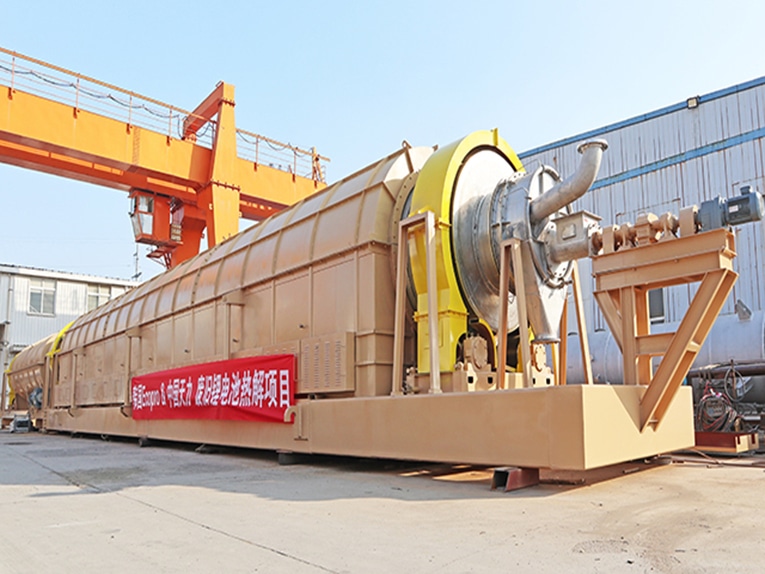
#Product Trends
Lithium Battery Recovery Technology
600 Degree High Temperature Pyrolysis Lithium Battery Recycling Precious Metals
On March 5th, the waste lithium battery pyrolysis equipment sent to Ecopro in South Korea arrived at the project site. Lithium battery pyrolysis recovery technology is mainly to extract precious metals from decommissioned power lithium batteries for recycling, and Tianli Energy mainly provides the core pyrolysis rotary kiln process and technology.
The waste lithium battery enters the kiln. After a high temperature of 600 degrees, the easily cracked components in the lithium battery are cracked off, and the remaining precious metals are recycled for reuse. This is Tianli Energy's first rotary kiln for processing waste lithium batteries. The landing of the Ecopro project in South Korea indicates that Tianli Energy has opened up the entire chain of the lithium battery industry from production to recycling.
It is understood that China’s annual decommissioning of lithium batteries can reach about 500,000tons. The rotary kiln of Tianli Energy can process 2 tons per hour, and the annual processing capacity is about 15,000 tons. To process the 500,000 tons of waste lithium batteries, dozens of such production lines are needed. The market scale should not be underestimated. In recent years, various national ministries and commissions have also gradually standardized and improved the recycling market for waste lithium batteries from the shallower to the deeper, from weak to strong at the policy level. Seeing this business opportunity, Tianli Energy has been cultivating lithium battery related industries since 2018, and has basically opened up all technical links from lithium battery production to recycling.
According to Liu Xiaopeng, head of the waste lithium battery pyrolysis project at Ecopro & China Tianli, Tianli Energy has higher technical safety than other rotary kilns on the market. This rotary kiln can achieve "atmosphere calcination", that is, it can control the oxygen content in the kiln. "The gases after high temperature pyrolysis are mostly flammable and explosive gases, which have the risk of explosion." Liu Xiaopeng introduced, "and we can control the oxygen content in the kiln to keep it in a low-oxygen environment and ensure safe production. The performance is greatly improved.” This technology has a very good application prospect in the industry.





